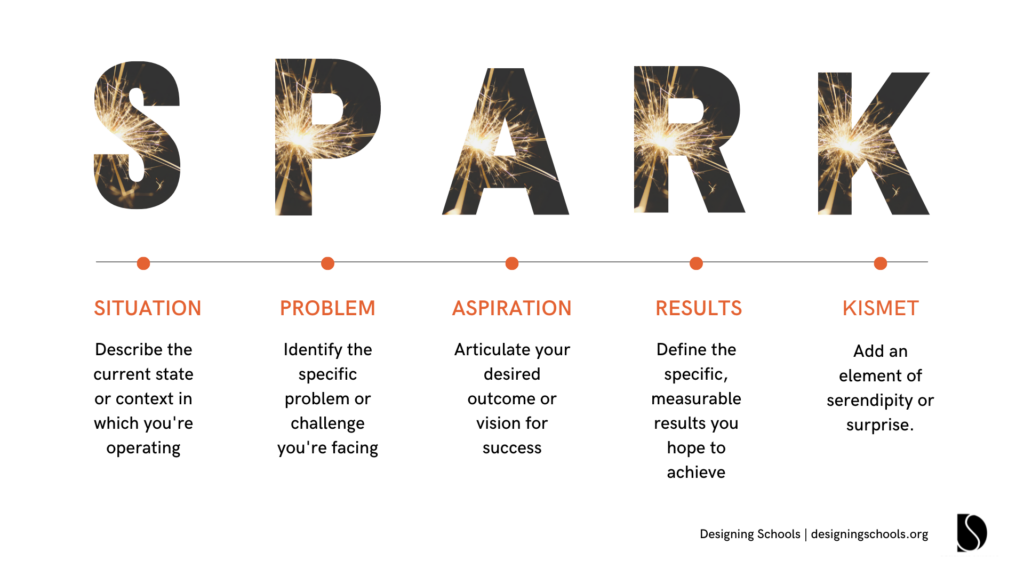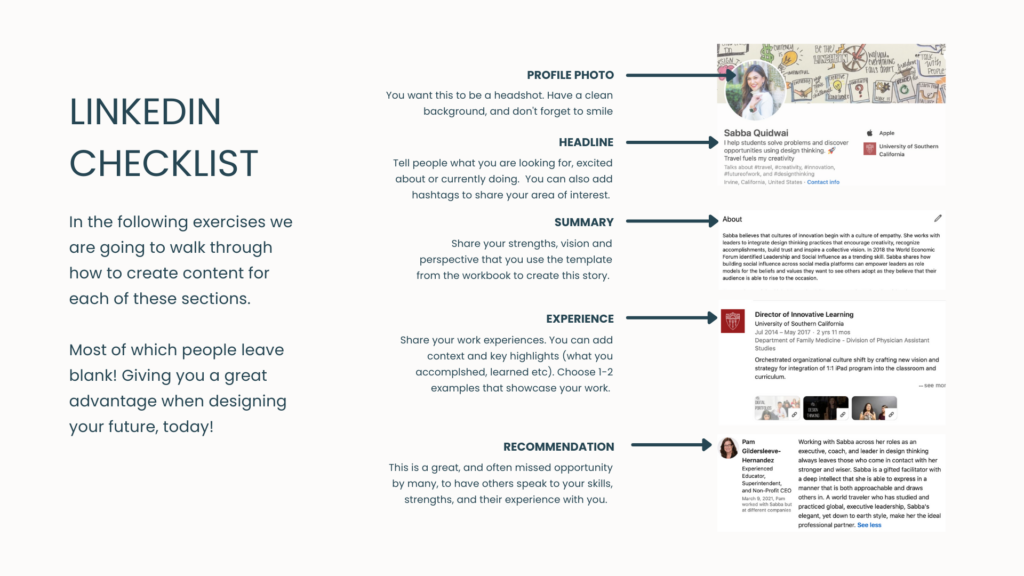“My only wish for you as you graduate from the class of 2023, is to give you all the things that were not possible for me. For your skills are vast as unhindered is your confidence, and you will enter into a world that looks exceedingly different.
So today I gift you the tools to help you keep up with the pace, knowing well there is no challenge you can’t embrace. Just know one thing as you turn your tassel for the last time, no person or thing can decide your future, for it is yours to design.”
I asked my younger sister, Hadiya Quidwai, who has a beautiful gift for turning ideas into poetry to write this article as if it were a poem. It’s a unique skillset she has that evokes emotion and connection for those she writes for. It’s also something that’s not reflective on a traditional transcript.
She’s not alone, we all have qualities that make us uniquely human. And in a world driven by artificial intelligence, these qualities are our human advantage.
AI and Assessment: Why Graduating with a LinkedIn Portfolio is a Must for Every Student
In today’s fast-paced world, skills carry more weight than traditional grades. With artificial intelligence (AI) emerging as an empowering ally in the learning process, schools stand at a crossroads. As they return this Fall, assessment must change. How we help our students enhance and develop their skills and strengths – their unique human advantage – must change.
Imagine a world where each high school or college student proudly displays a curated LinkedIn portfolio, showcasing a diverse array of projects that complements a transcript. This vision isn’t a distant utopia; it’s within our reach. This marks a thrilling evolution in our approach to education. Where high school and college students shine in the professional sphere. And armed with a robust LinkedIn portfolio brimming with diverse projects that echo their unique abilities and potential. This inspiring vision isn’t a distant dream; it’s the dawn of a promising reality.
The Backward Design Model: A Framework for Designing Assessments with Artificial Intelligence
When I reflect on my journey in education, one methodology has been a constant compass helping me adapt the curriculum to emerging technologies – the Backward Design Model by Wiggins and McTighe. This model served as a pillar of support as I sought to craft meaningful and relevant learning experiences.
Every step of the way, it prompted me to ask three crucial questions:
- What do I want my students to know, understand, and be able to do?
- How will I know they have achieved these outcomes?
- How will I support them along the way?
These questions form the backbone of the three-stage Backward Design process:
- Identify desired results: Articulate the skills and knowledge students should gain.
- Determine acceptable evidence: Establish the benchmarks that will demonstrate student understanding and proficiency.
- Plan learning experiences and instruction: Design activities and lessons that will equip students with the needed skills and knowledge.
As technology advanced, the possibilities for ‘acceptable evidence’ expanded exponentially. With the introduction of iPads and digital tools, the possibilities for how students shared their learning were exponential. Essays became multimedia presentations. Handwritten reports evolved into interactive portfolios. Learning demonstrations stretched beyond paper and pen, encouraging creativity, critical thinking, and digital literacy. Students could now create a video essay with special effects, compile a digital portfolio, or design an interactive online presentation, all serving as dynamic and engaging forms of assessment.
For instance, within the Backward Design framework in an English class, students might be tasked to create a podcast series discussing the themes of a novel, interviewing experts on the topics, and using AI tools for editing and transcription. These project-based assessments align with Education Taxonomy 4.0 from the World Economic Forum as they foster real-world skills like complex problem-solving, critical thinking, and digital literacy.
Overcoming Barriers with AI: From Traditional Standards to the Backward Design Model
While the possibilities for these types of dynamic learning experiences have always existed, a significant barrier for many educators is making the transition from a traditional, standards-based curriculum to one that embraces innovative practices that leverage emerging technologies. This transition requires a shift in perspective. From teaching as a transmission of knowledge to teaching as a facilitation of active learning experiences.
Above all this transition requires a significant amount of time.
Today, AI tools like ChatGPT can act as a thought partner, and an assistant to help streamline this transition. By simulating human-like text generation, ChatGPT can aid educators in reimagining traditional standards and crafting engaging skill-focused assessments.
Using the SPARK Framework to Create Promtps with ChatGPT
I created the SPARK framework to design prompts that help us achieve our goals and outcomes when using AI tools.

Let’s look at two examples of using the SPARK method to apply the Backward Design Model.
Standard: Students should be able to explain the causes of World War II.
Prompt: I am going to share a SPARK example so that you can help me apply the backwards design model to this learning experience. I want you to identify the essential question, connect it to a standard, and make sure it is relatable to the students.
- Situation (the context): While teaching a diverse group of 10th grade high school students about World War II, I want to employ the Backward Design Model to restructure my approach to the topic and create more engaging assessments that allow my students choice in how to share what they are learning.
- Problem (the challenge): I noticed that traditional assessments failed to capture the depth of my students’ understanding or allow them to express their perspectives creatively.
- Aspiration (the hope): I envisioned a project where students could delve into the causes of World War II, crafting narratives that reflected their unique interpretations.
- Result (expected outcome): I expected students to demonstrate an in-depth understanding of the war’s causes, effective research skills, and the ability to convey complex ideas through a compelling narrative.
- Kismet (the surprise): What is something I haven’t considered that will enhance this experience?
Use the above to help me apply the backwards design model to this learning experience.
Click here to read the full conversation with ChatGPT and how it designed this experience.
When using the SPARK method with AI tools like ChatGPT, educators can accelerate how they integrate frameworks like the Backward Design Model that not only meet traditional standards but also cultivate students’ skills and amplify their voices.
In traditional education settings, this is where the story might end. The project is completed, the skills are learned, and the grade is assigned.
Today educators have an exciting opportunity to extend this narrative as they design their assessments and learning experiences. It’s time we empower students to showcase their acquired skills, completed projects, and unique experiences to a larger network of people. This shouldn’t be the exception for students who do this outside of school. This should be the norm where every student graduates with a portfolio and professional network.
Here’s where LinkedIn comes into play. This platform is not just for job seekers and professionals. It can also serve as a dynamic, evolving portfolio for students, a platform where they can share their learning journey and connect with like-minded individuals, mentors, and potential future employers.
So let’s explore how we can leverage LinkedIn to help our students build their network and their social capital while amplifying their voice and demonstrating their learning.
LinkedIn: Empowering Students to Narrate Their Own Success Stories
In 2022, 9th-grade students entering high school were born into an age of AI. They have never known a world without social media, and mobile devices. Despite the technological advances that have transformed the ways in which we live, work, and communicate, their school experience resembles a century-old experience.
Reid Hoffman and Ben Casnocha in their book “The Startup of You: Adapt, Take Risks, Grow Your Network, and Transform Your Career,” propose that everyone treat their career like a startup by embracing an entrepreneurial mindset.
This does not mean that everyone becomes an entrepreneur. It means that we develop a mindset that allows us to adapt and build networks. And take risks to take advantage of the opportunities that today’s world offers.

This century-old experience has left today’s young people feeling anxious and disillusioned about career planning. Especially in a post-pandemic world where many are now working in hybrid and remote workplaces. Imagine having been in high school or college, applying for internships, volunteer and work experiences, and being part of extracurricular activities where you build relationships, and get exposure to different career pathways, only to find yourself at home behind a screen.
Imagine if every student introduced themselves as:
“Hi! I’m ____ and I’m working on _____,” instead of:
“Hi I’m a freshman and I go to Old School High.”
LinkedIn, which many of you may remember as a place to go when looking for a job, has evolved into where the world of work lives. LinkedIn is unique because it is both a portfolio of your work and a professional network.



A well-constructed LinkedIn portfolio can bring to life the competencies that students have nurtured over time. The platform gives them the opportunity to showcase their projects, establish a professional presence, and network with individuals and organizations in their chosen fields.
Here are the top reasons why I recommend students graduate with a LinkedIn profile.
- Featured Posts. This is an opportunity to highlight your top 3 pieces of work that you want others to see as soon as they visit your profile.
- Recommendations. Paper recommendations are great. Public ones are even better. When students gather recommendations on LinkedIn they are showing people what they can do, and recommendations add a strong layer of credibility. It’s not just me telling you what I do, it’s other people validating my skills and strengths as well.
- People. No other platform gives you access to connect with people where you can so clearly see job titles, and academic and professional histories, and send them a message. When students have strong profiles, clear goals, and a deep sense of self-awareness, others notice.

Creating Futures: AI, Backward Design, and LinkedIn
As AI forces us to rethink assessments and what skills and mindsets today’s learners need, LinkedIn holds immense promise for the future of education. As we shift from traditional grading to a richer, skill-oriented portrayal of student abilities, we are nurturing learners who are prepared to navigate and contribute to their world. This vision underscores the transformative potential of technology in education and the power of connection in shaping successful futures.
Interested in bringing these innovative practices to your school? We have a summer experience for students and an entire course and workshop series for schools to design an innovative approach as they consider Ai and assessment practices.
I’m Sabba.
I believe that the future should be designed. Not left to chance.
Over the past decade, using design thinking practices I've helped schools and businesses create a culture of innovation where everyone is empowered to move from idea to impact, to address complex challenges and discover opportunities.
stay connected
designing schools